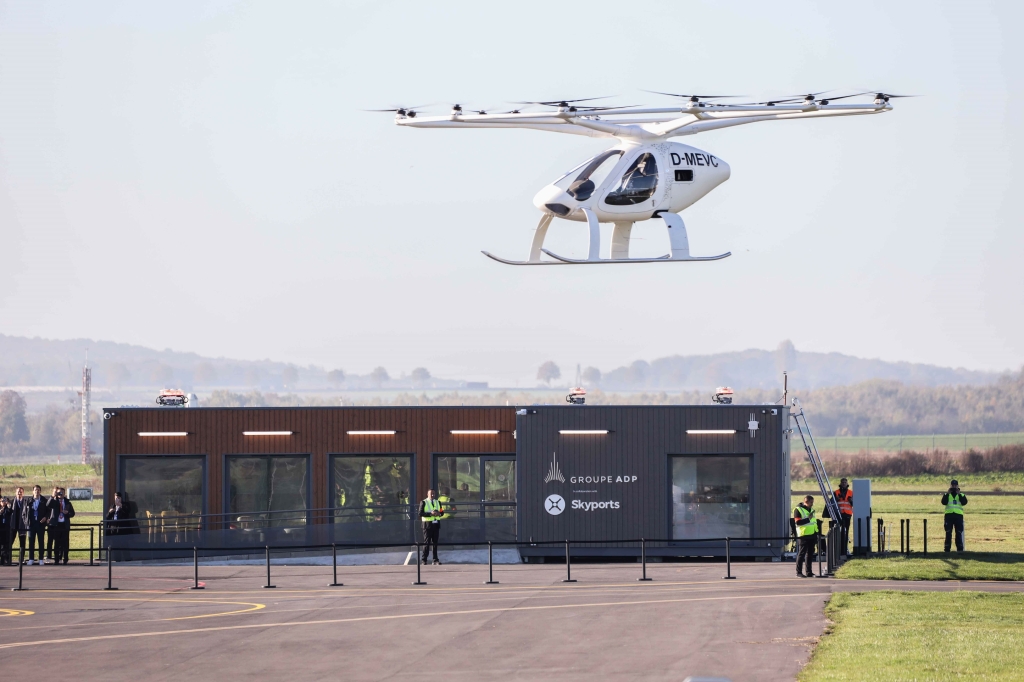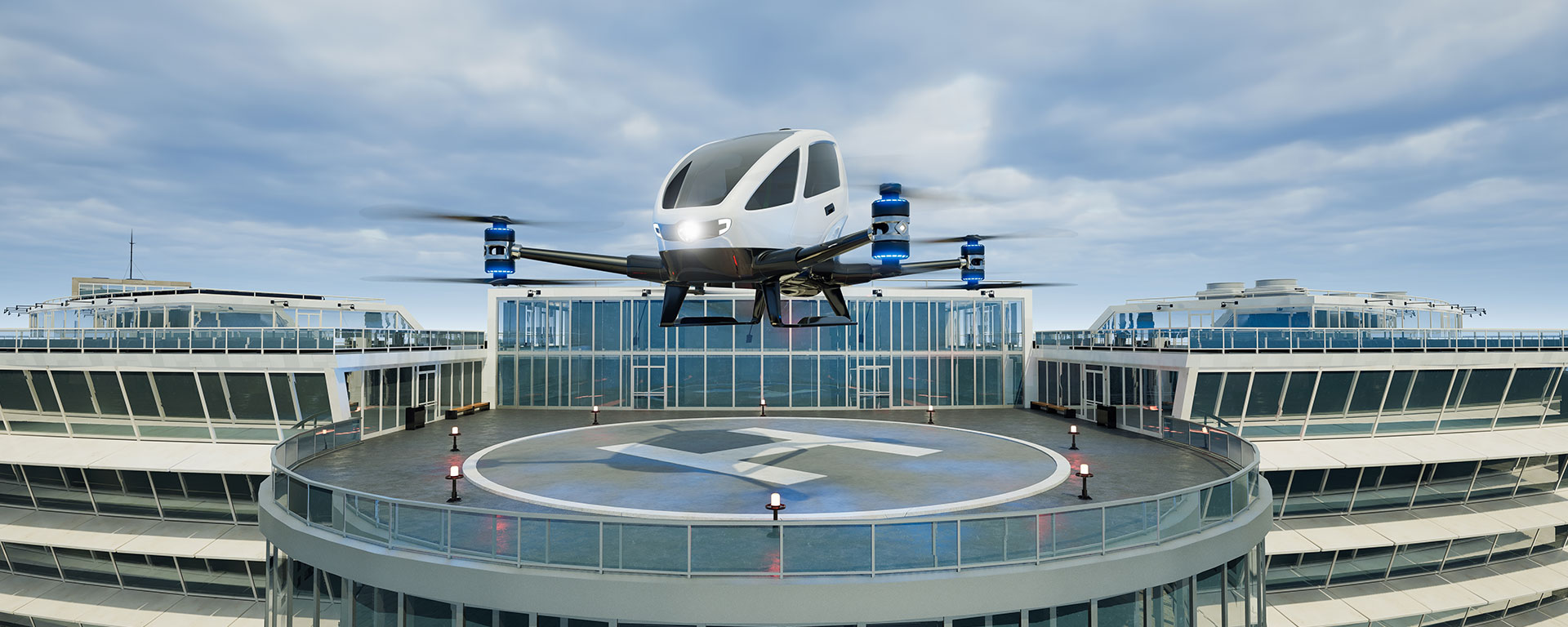Vertiports promise to allow us to pick up electric aircraft without using “traditional” airports. With regulators moving fast to accommodate new airborne mobility, transport journalist Selvyn Parker finds it’s not all as futuristic as it might sound.
It takes off and lands with hardly any noise. It whisks passengers in minutes between offices, terminals and anywhere else they want to go. It’s the next revolution in aviation, according to its proponents. And its home could be a vertiport near you.

The imminent arrival of the electrically powered vertical takeoff and landing aircraft is triggering a scramble to provide enough vertiports to accommodate them. As electric vertical take-off and landing aircraft (eVTOLs) and other new-era aircraft clear the last regulatory hurdles as early as 2024 or 2025, the number of vertiports around the world is set to proliferate possibly into the hundreds.
In fact, there’s probably a vertiport coming near you whether you live in Europe, the Americas or Asia. And you will hardly know it’s there. According to the growing number of commercial interests throwing their weight behind vertiports, they may take up as little as an acre of space and house perhaps three aircraft, while a big vertiport will occupy just three acres with six to eight aircraft stands.
At last count, just four vertiport companies – Spain’s Ferrovial, UK start-up Urban-Air Port, Corporacion America Airports and Saudi Arabia’s Skyports Infrastructure – are talking of at least 200 of these facilities worldwide. And that would just be the beginning of what enthusiasts like Urban-Air Port founder Ricky Sandhu describes in Utopian terms. At the opening of a demo vertiport in Coventry, Britain, in 2022, he predicted “a new age of transport, an age of zero-emission, congestion-free travel between and within cities that will make people healthier, happier and more connected.”
Another new era?
Although previous revolutions in aviation – from the flying boat to jet travel – have been described in similarly glowing terms, there’s no doubt that vertiports are set to be the platforms for seamless transport between trains, buses, existing airports, nearby cities and downtown offices. In time, perhaps as soon as a decade, aviation authorities like the European Union Aviation Safety Agency (EASA) believe some or all of these aircraft will be unmanned – that is, remotely piloted from the ground. Boeing’s blueprint for the future of city transport makes a similar prediction, partly because there won’t be enough air traffic controllers and pilots to cope.
The US hopes to be at the forefront of the revolution, but it has plenty of competitors. “Our country is stepping into a new era of aviation,” promises Shannetta Griffin, the Federal Aviation Administration’s associate administrator for airports.
There will be no shortage of revolutionary aircraft that are expected to populate vertiports. Some will be “powered-lift” aircraft with fixed wings that face down during takeoff and landing, while others will be rotor-driven flying cars like Hyundai’s four-passenger S-A1, with several concepts coming somewhere in between. Scores of manufacturers are hurrying to get their designs into the air in a race for vertiport space.
Meantime there’s a lot of competition for vertiport sites. Conventional airports are already building or planning them in an effort to capitalise on the revolution. But Ferrovial’s chief executive for vertiports, Kevin Cox believes most will be located away from airports, in highly populated places where the connectivity of eVTOL’s will be at its most useful. French authorities agree; a powerful consortium of aviation authorities and manufacturers has developed the first vertiport in Europe, at Pontoise near Paris and could have it in operation by the 2024 Olympics.
Ferrovial believes passengers will look for short-hop intracity flights of less than 32 kms, city-to-city connections of between 80 and 110 km, and flights between airports and downtown. Although the Spanish company has eyes on the UK and other countries, right now it’s concentrating on Florida where it has plans for no less than ten vertiports.
But are we really looking at a revolution? While conventional airports consume vast amounts of space and capital and are often socially divisive because of the long-suffering residents who have to live with the roar of jet engines, they are not going away. In fact, according to vertiport developers, many airlines see them as accessories for attracting more passengers. For instance, Corporacion America Airports, which operates 53 airports in six countries, mainly across Latin America, is working with Dubai’s Skyports on the development of eVTOL facilities.
And how different is a vertiport from today’s heliport? In principle, not much. Today’s rotary-powered aircraft take off and land on a sixpence. Goods are shifted with a minimum of fuss. Flights are frequent. The main difference will be the peace and quiet of the eVTOL, whatever form it takes. To put it bluntly, today’s helicopters make such a racket that few communities are prepared to put up with them.
The exceptions are mountainous or remote regions where helicopters are essential for tourism and rescue operations. For the last 18 months, I have been based in just such a place, the town of Te Anau near the bottom of New Zealand, which boasts several helicopter companies that fly pretty much from dawn to dusk and often in the dark in the event of emergencies. Although the noise of beating rotors and thumping engines rends the mountain air, nobody minds because of the humanitarian and commercial role that helicopters play in the community’s life. They safely transport hunters, trampers, divers, fishermen, sight-seers, medical personnel, environmental experts, even couples looking to tie the knot in a pristine wilderness. The advent of the whispering eVTOL will be transformative in such places.
Looking ahead, the big issue may be whether there will be an excess of eVTOLs for the vertiports available to accommodate them.
Selwyn Parker is an independent journalist and author of Chasing the Chimney Sweep about the first Tour de France of 1903.
The International Transport Forum’s work on the future of aviation and connectivity includes studies on decarbonising aviation, sustainable aviation fuels and integrating drones into the transport system.
